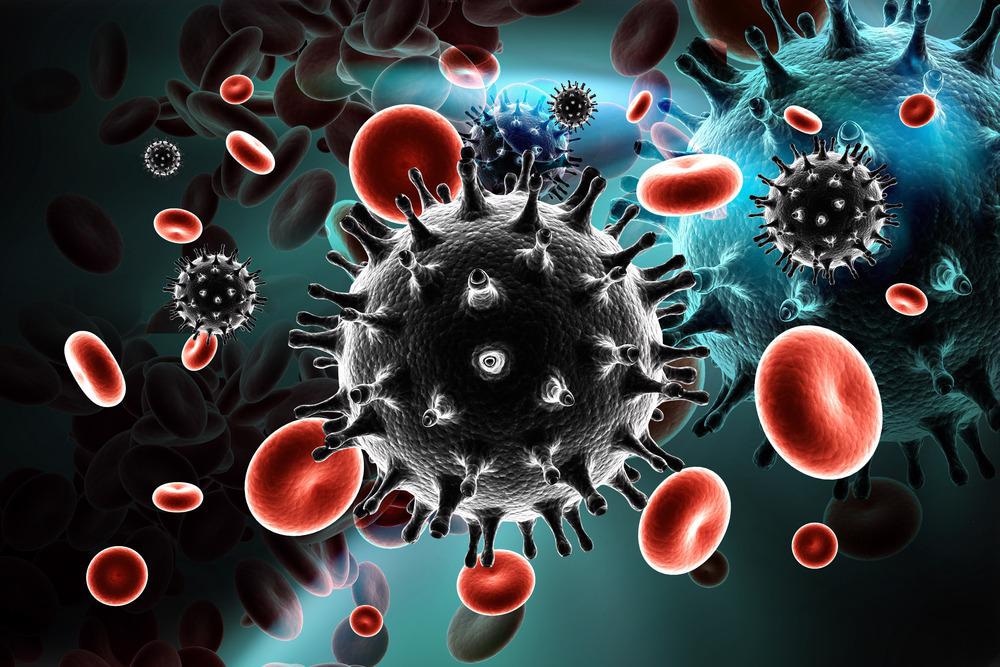Northwestern Medicine researchers are employing recent developments in CRISPR gene-editing technology to discover a novel biological method that could lead to longer-lasting treatments and new therapeutic tactics for the Human Immunodeficiency Virus (HIV).

Image Credit: RAJ CREATIONZS/Shutterstock.com
With approximately 1.5 million new infections in the last year alone, the HIV epidemic was forgotten during the COVID-19 pandemic, but it remains a serious and persistent threat to human health.
For more than 40 years, drug makers and research groups have been looking for cures and novel treatment options for HIV, but their knowledge of how the virus infects the human body has hindered their progress. How does a virus with only 12 proteins and a genome a third the size of SARS-CoV-2 capture the body’s cells in order to replicate and propagate across systems?
That was the goal of a Northwestern University multidisciplinary team.
Researchers used a new CRISPR gene-editing method to assess human genes essential for HIV infection in the blood, finding 86 genes that may play a role in the way HIV replicates and causes disease. This process was compared with over 40 genes that have never been glanced at in the context of HIV infection. The study was published on April 1st in the journal Nature Communications.
The findings provide a new roadmap for understanding how HIV incorporates into human DNA and develops into a long-term infection.
The existing drug treatments are one of our most important tools in fighting the HIV epidemic and have been amazingly effective at suppressing viral replication and spread.”
Judd Hultquist, Study Co-corresponding Author, Northwestern University
“But these treatments aren’t curative, so individuals living with HIV have to follow a strict treatment regimen that requires continual access to good affordable health care—that’s simply not the world we live in,” Hultquist added.
Treatments, according to Hultquist, could one day become cures if scientists get a better knowledge of how the virus multiplies.
Hultquist is an assistant professor of medicine in infectious diseases at Northwestern University Feinberg School of Medicine and the associate director of the Center for Pathogen Genomics and Microbial Evolution.
A method without compromise
Until far, investigations on how HIV replicates in the lab have depended on immortalized human cancer cells (such as HeLa cells) as models. Although these cells are simple to control in the lab, they are not exact replicas of human blood cells.
Furthermore, unlike CRISPR, most of these researches employ technology to reduce the expression of certain genes rather than turn them off totally, so researchers cannot always determine if a gene was involved in assisting or inhibiting viral propagation.
With the CRISPR system, there’s no intermediary—the gene is on or off. This capability to turn genes on and off in cells isolated directly from human blood is a game changer—this new assay is the most faithful representation of what’s happening in the body during HIV infection that we could easily study in the lab.”
Judd Hultquist, Study Co-corresponding Author, Northwestern University
T cells, the most common HIV-infected cell type, were extracted from donated human blood and hundreds of genes were knocked out using CRISPR-Cas9 genome editing. The HIV-infected “knock-out” cells were then studied. Infection was reduced in cells that lost a viral replication gene, whereas infection was increased in cells that lost an antiviral component.
The scientists next confirmed the revealed factors by selectively knocking them off in additional donors, finding a nearly even split between newly discovered and well-researched pathways.
Moving toward a cure for HIV
To know researchers were doing something properly, Hultquist said their data showed a “perfect split” of novel and known characteristics.
This is a really great proof-of-concept that the steps and processes that we took to perform the study were robust and well thought out. That nearly half of the genes we found were previously discovered increases confidence in our dataset. The exciting part is that over half—46—of these genes had never before been looked at in the context of HIV infection, so they represent new potential therapeutic avenues to look into.”
Judd Hultquist, Study Co-corresponding Author, Northwestern University
The researchers are looking forward to further filtering this technology to enable genome-wide screening, in which they knock off or turn on every gene in the human genome individually to find all potential HIV host factors. These data would be a crucial component of the puzzle, bringing them even closer to developing therapeutic techniques.
Source:
Journal reference:
Hiatt, J., et al. (2022) A functional map of HIV-host interactions in primary human T cells. Nature Communications. doi.org/10.1038/s41467-022-29346-w.